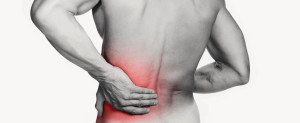Approximately 60-80% of Americans will get back pain at some time in their lives. For many patients, the back pain can be paralyzing. You worry about whether or not you can lift your child or grandchild, so you don’t. You remember that searing pain the last time you helped unload the groceries, so you don’t. The pain and fear can be so debilitating you just sit, with fingers crossed, and wait. It can be very easy to think that something must be broken, and if it’s repaired my pain will go away.
Not exactly.
More than 85% of patients who present to primary care have low back pain that cannot be reliably attributed to a specific disease or spinal abnormality1. Spine abnormalities confirmed with an MRI are common in individuals over 30 with or without pain, so it’s tough to say with 100% certainty what exactly is causing your pain. For some patients, there is a legitimate need for spine surgery and fusion2. But back surgery CANNOT be guaranteed to cut out your pain, its purpose is to repair or change your spinal anatomy3.
In the last 5-10 years, more and more research is beginning to show physical therapy is just as effective as spinal surgery in reducing pain and disability. This information shows that we can achieve similar outcomes with significantly lower healthcare costs, while you can avoid the potential for serious post-operative complications.
A study published in 2013 showed there was no significant difference in long-term outcomes between fusion or nonoperative treatment for lumbar degenerative disc disease4. Another study in 2014 showed no significant difference in lumbar fusion versus nonoperative management for discogenic low back pain5 and concluded that either operative intervention OR physical therapy and nonoperative management remain acceptable treatment methods for low back pain.
A well done historical cohort study was completed that followed workers compensation subjects after lumbar fusion and found a 74% failure in return to work with a 27% reoperation rate! They also found that opioid use increased 41% after surgery, with 76% of patients continuing opioid use after surgery6.
So, what can you do?
You can start by working with a knowledgeable, caring physical therapist. The therapists at McVay Physical Therapy specialize in treating orthopedic conditions conservatively, and work closely with local area doctors to help manage your pain while getting you back to doing the things you love.
A typical treatment for your low back pain would first begin with a full history to understand your symptoms and goals for treatment, followed by a physical examination to see your movement patterns, impairments, and positions that may be generating your pain. Your physical therapist will then create a plan of care utilizing manual therapy techniques like joint mobilization and stretching, as well as exercises prescribed specifically to address any movement dysfunction or weakness that is linked to your pain. In some cases, spinal traction is also utilized as well as other modalities. More than one treatment session may be required to reach your maximum potential and correct any movement pattern or dysfunction that can be causing your pain.
Call now to schedule your same-day appointment, and begin the road to recovery!
By: Christopher Grant DPT, CSCS
- vanTulder MW, Assendelft WJ, Koes BW, Bouter LM. Spinal radiographic findings and nonspecific low back pain. A systematic review of observational studies. Spine. 1997;22:427-34.
- Carrol L. Back Surgery may backfire on patients in pain. MSNBC website. http://www.nbcnews.com/id/39658423/ns/health-pain_center/t/back-surgery-may-backfire-patients-pain/#.VPR73_nF98E. October 14, 2010. Accessed March 2, 2015
- Ullrich, PF. Failed Back Surgery Syndrome: What it is and how to avoid pain after surgery. Spine-health website. http://www.spine-health.com/treatment/back-surgery/failed-back-surgery-syndrome-fbss-what-it-and-how-avoid-pain-after-surgery. January 28, 2003. Accessed March 2, 2015.
- Smith JS1,Sidhu G2, Bode K2, Gendelberg D3, Maltenfort M2, Ibrahimi D4, Shaffrey CI4, Vaccaro AR2. Operative and nonoperative treatment approaches for lumbar degenerative disc disease have similar long-term clinical outcomes among patients with positive discography. World Neurosurg. 2014 Nov;82(5):872-8. doi: 10.1016/j.wneu.2013.09.013. Epub 2013 Sep 15.
- Bydon M1,De la Garza-Ramos R, Macki M, Baker A, Gokaslan AK, Bydon A. Lumbar fusion versus nonoperative management for treatment of discogenic low back pain: a systematic review and meta-analysis of randomized controlled trials. J Spinal Disord Tech. 2014 Jul;27(5):297-304. doi: 10.1097/BSD.0000000000000072.
- Nguyen TH1,Randolph DC, Talmage J, Succop P, Travis R. Long-term outcomes of lumbar fusion among workers’ compensation subjects: a historical cohort study.Spine (Phila Pa 1976). 2011 Feb 15;36(4):320-31. doi: 10.1097/BRS.0b013e3181ccc220.






Recent Comments